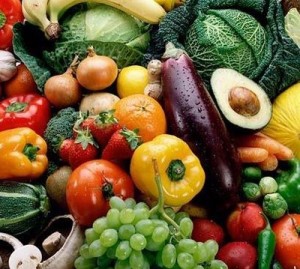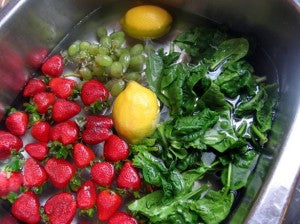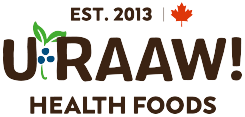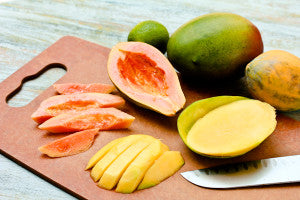With up to 40% of all cancers being directly linked to the foods we eat (1), and numerous other diseases and ailments, there is no question that diet plays a large role in our overall health and well being. Fortunately, we have full control over the foods we choose to consume.
Below, we outline the the “cleanest” and “dirtiest” foods – those which contain the highest, and lowest levels of various contaminants.
We hope that this information will help you make the healthiest choices on your next trip trip to the grocery store or farmer’s market.
The “Dirtiest” Conventionally Harvested Foods
The foods below contain the high levels of pesticides, hormones, and / or antibiotics. When possible, it’s best to purchase organic, or better yet, harvest your own!
Fruit
- Apples & apple products (may also be treated with antibiotics)
- Blueberries
- Grapes & Raisins
- Nectarines (imported nectarines are higher than domestic)
- Peaches (fresh, frozen, canned)
- Strawberries (fresh, frozen)
Vegetables
- Celery
- Collard Greens

- Cucumber
- Kale
- Lettuce (all varieties)
- Peppers (hot, bell)
- Potatoes
- Spinach
- Zucchini
Meat & Dairy
- All high fat cuts of meat (beef, pork, poultry)
- Albacore tuna (high levels of mercury)
- Farmed fish & seafood (Atlantic salmon, Tlapia, shrimp)
- Milk, cheese, yogurt (more of a concern in USA due to stronger Canadian safety standards)
Other
- Coffee
- Chocolate
- Red wine
The “Cleanest” Conventionally Harvested Foods
The “cleanest” foods, are those which contain the lowest levels of contaminants. If purchasing conventionally harvested foods, these are your safest best.
It should be noted that although many of the fruits and vegetables listed here contain a thick skin that blocks pesticides from reaching the edible portion, a certain amount of pesticides are absorbed.
Fruit
Vegetables
- Asparagus
- Cabbage
- Corn
- Eggplant
- Mushrooms
- Onions
- Sweet peas
- Sweet potatoes
Meat & Dairy
Unless you are purchasing your meat and dairy products directly from local farmers, or catching wild game your self, it’s hard to know exactly how clean your meat is. Grass fed and finished beef and lamb can be good choices, as are game meats such as bison and venison. Organic eggs from free-run chickens can be a safe bet as well.
Generally the leaner the cuts of meat, the less potential chemicals, since they tend to accumulate in fat tissue.
As far as seafood goes, it’s best avoid anything that is farmed. Stick with wild, from sustainable sources.
The Benefits of Organic Food
The benefits of purchasing organic food is twofold. Firstly, you are reducing the chemical load on your body. Many organic foods are also grown in more nutrient dense soil, meaning that the nutritional value of the foods may be higher.
Secondly, you are helping from an environmental stand point, since the farmers growing organic foods don’t use synthetic fertilizers and pesticides that cause pollution.
How to Clean Fruits & Vegetables to Remove Pesticide Residue
By washing our fruits and vegetables before consumption, we can eliminate a large portion of the pesticides that reside on their surface.
Washing is simple, using nothing more than water, white vinegar, and salt.
Here’s how:
Step #1 – Fill sink or large pot with cool water
Step #2 – Add 1/4 cup of white vinegar, and approximately 2 tablespoons of salt
Step #3 – Allow fruit or vegetables to soak for 5-10 minutes
Step #4 – Remove fruit or vegetables from water, rinse under tap, and dry
Another option for certain fruits and vegetables is to remove their skin (apples, cucumbers, pears, peaches, nectarines, potatoes etc.). The only disadvantage here is that the skin often contains lots of nutrients, and by removing it we lose out on all of
Putting it All Together
For the vast majority of Canadians, eating organic foods 100% of the time is nearly impossible, whether due to food availability issues or financial constraints. We believe that it’s best to consume organic versions of the foods you eat most often, as well as those that contain the highest levels of contaminants. By doing this, you will improve the health of both your body, and the environment.
Please let us know what you think by commenting below!


